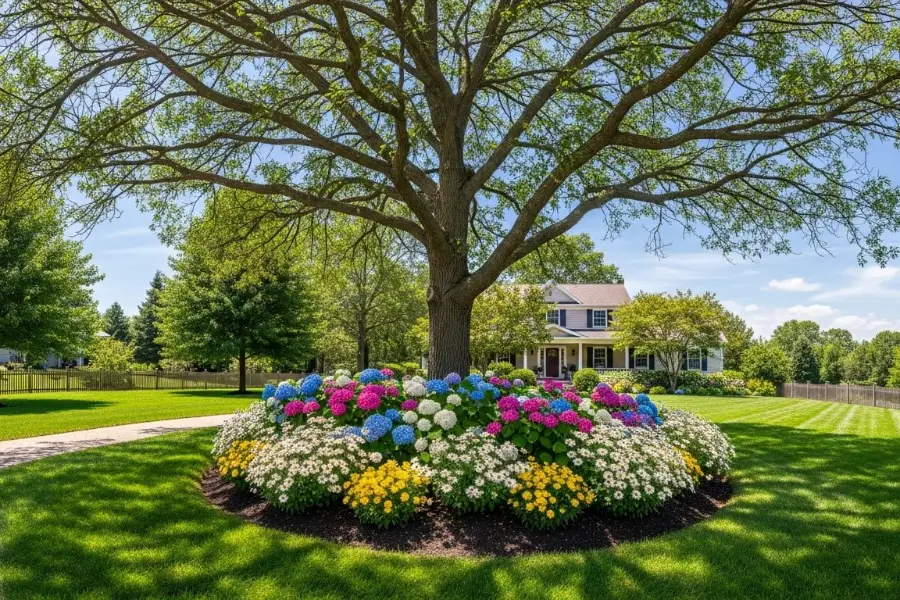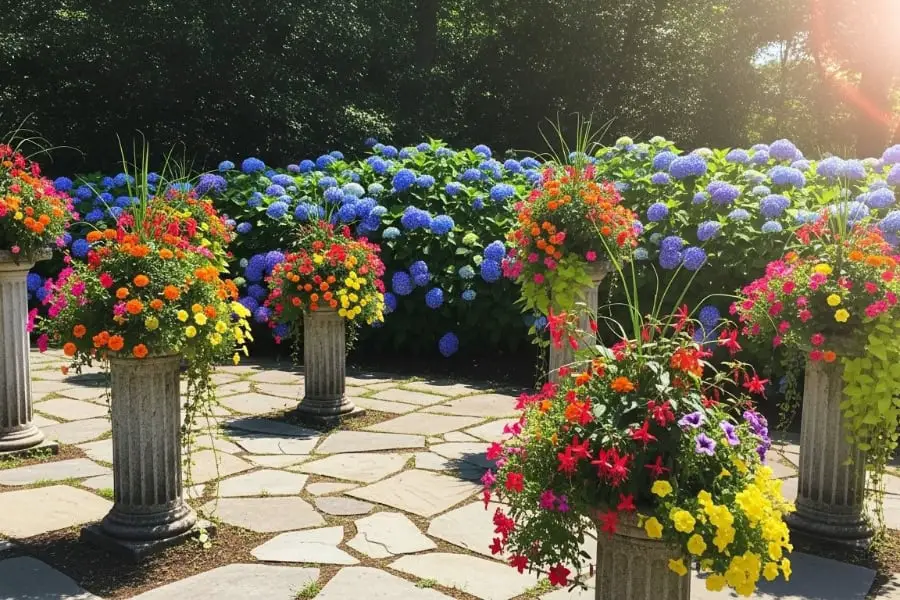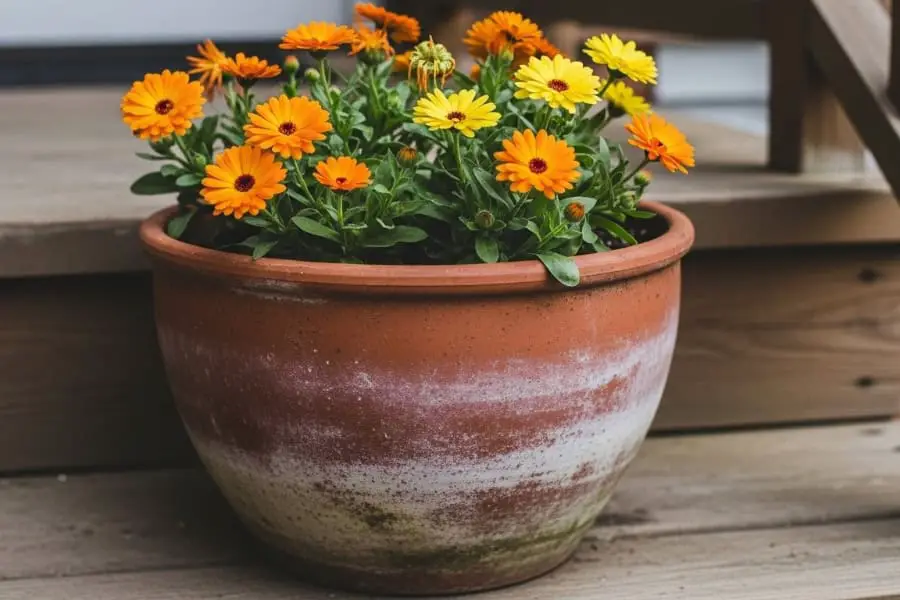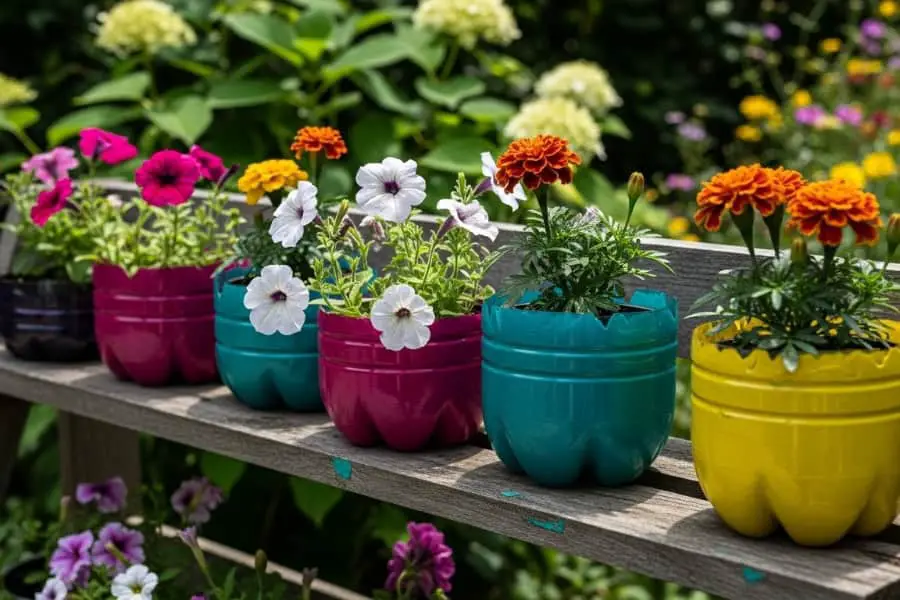Planning a fall garden can seem tricky. It’s not always easy to keep gardens colorful as the weather cools. After some trial and error, I found that hardy perennials and late bloomers can add lasting beauty.
Let me share 5 simple tips to help keep your garden vibrant all season!
Contents
- 1 Tip 1: Transforming Containers with Fall-Ready Perennials
- 2 Tip 2: Variety in Seasonal Containers
- 3 Tip 3: Choosing Hardy Perennials for Containers
- 4 Tip 4: Incorporating Late-Season Bloomers
- 5 Tip 5: Layering Plants for Dynamic Gardens
- 6 Conclusion
- 7 FAQs
- 7.1 1. What are the best vegetables to plant for a fall garden?
- 7.2 2. When should I start planting my fall crops?
- 7.3 3. How can I protect my veggies from frost in the fall?
- 7.4 4. Can crop rotation help with a successful fall garden?
- 7.5 5. What’s an easy tip for improving soil quality in a fall garden?
- 7.6 6. Is succession planting useful for fall gardens?
Tip 1: Transforming Containers with Fall-Ready Perennials
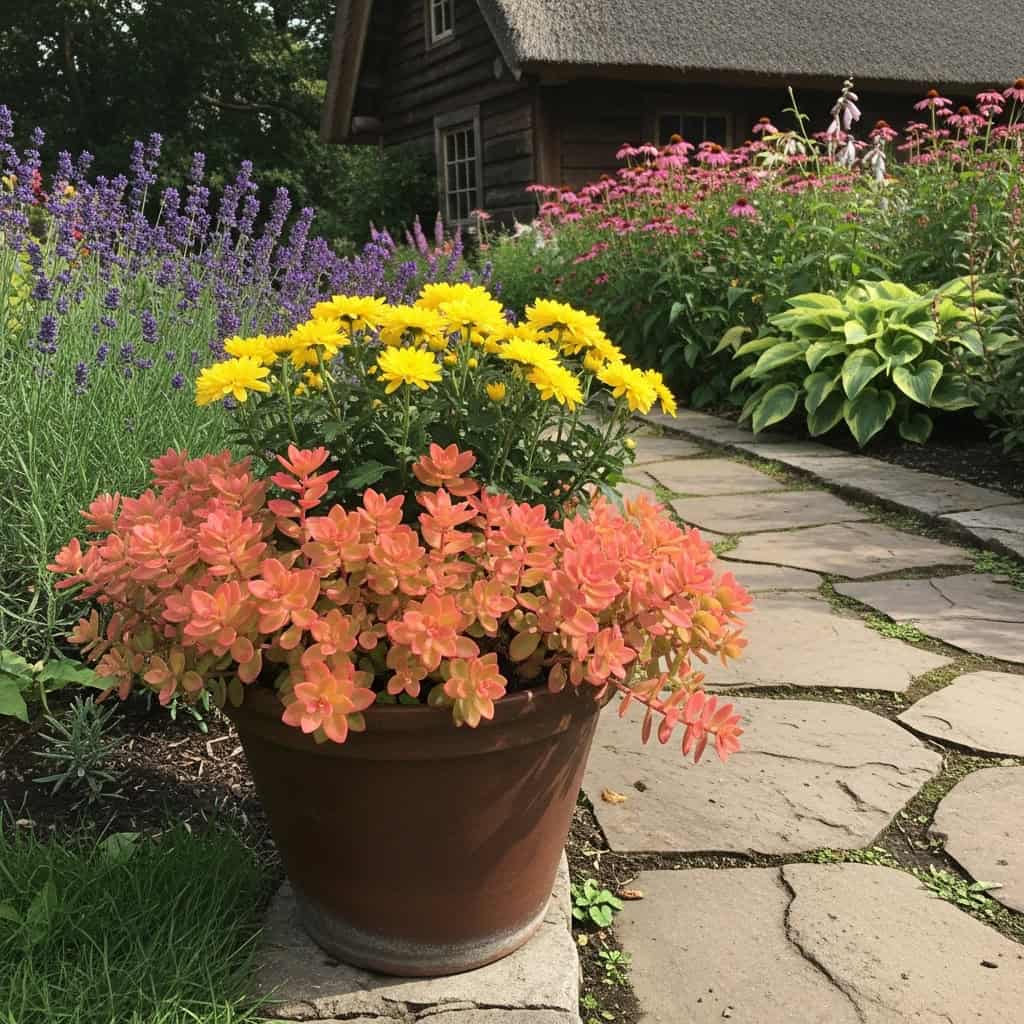
Switch up your container plants with sturdy, autumn-friendly choices. Mix textures and colors to create eye-catching displays for the season.
Incorporating a variety of perennials in fall containers
I like using different perennials in my fall containers. Plants like hookera, tiarella, sedum, and Japanese forest grass give lasting color and texture. They survive cooler weather well and bring life to the garden for months.
Mixing these with annuals makes the display even better. Perennials make it cheaper too since I can reuse them next year or plant them in my yard after the season. It feels like a smart way to keep my gardening low-cost but still beautiful!
Using a mixture of annuals and perennials in containers
Combining annuals like pansies or petunias with perennials creates vibrant fall containers. Annuals add quick blooms, while perennials bring lasting structure and color. I often mix plants such as hookeras, tiarella, or ornamental grass with seasonal flowers to make my planters pop.
Using seeds for easy-to-grow annuals like alyssum adds charm without much effort. Driveway planters look stunning with solosia and asters paired together. This blend keeps the display colorful all season long and ensures something always catches the eye in cool weather gardening.
Tip 2: Variety in Seasonal Containers
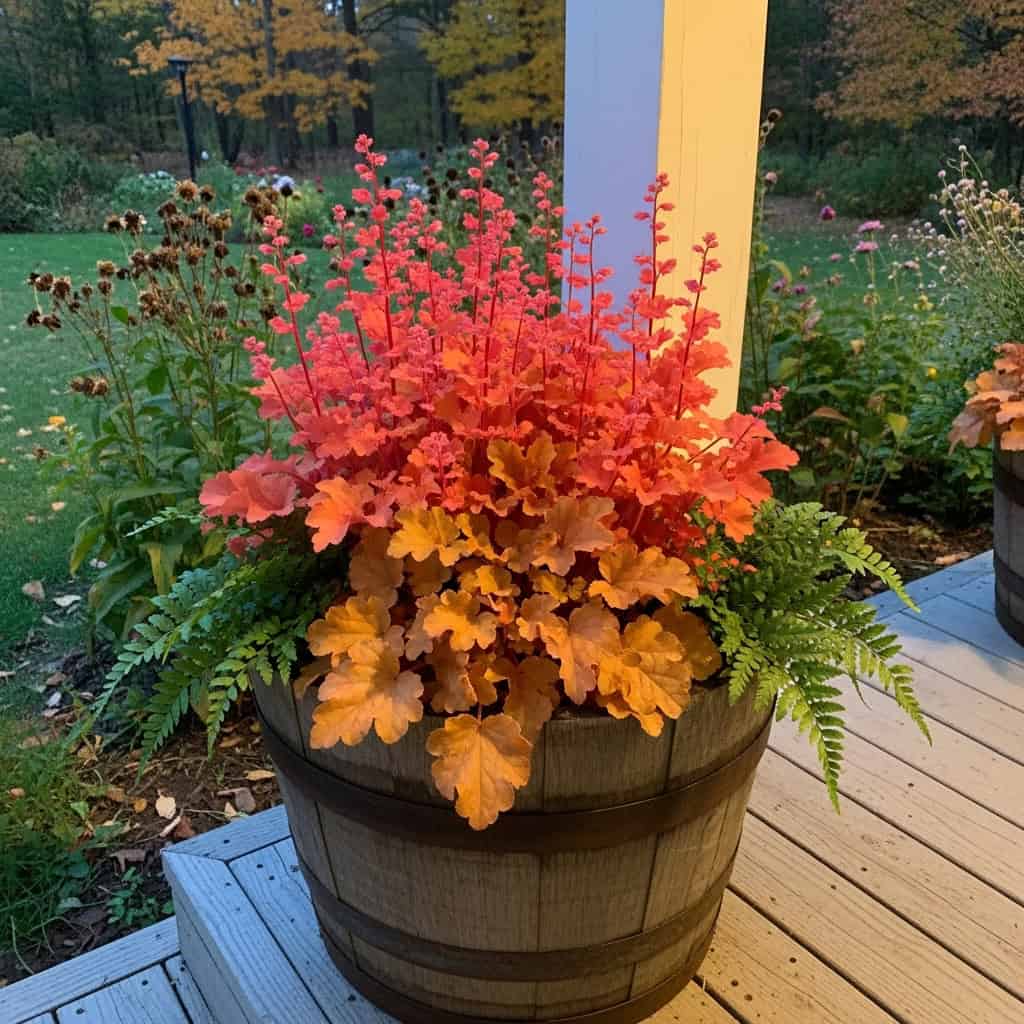
Try pairing bold plants with soft, leafy ones for unique fall containers. Mix textures and colors to make your garden stand out!
Exploring options beyond mums for fall containers
I like adding ornamental grasses to fall containers. They bring movement and texture. Tall varieties, like fountain grass, give height and drama.
Cool-weather plants make great additions too. Ornamental cabbage or kale offer deep purples and greens. Sedums add unique shapes and soft colors for balance.
Suggesting alternative plants like hookeras, ferns, and sedum
Hookeras bring bold colors to fall gardens. Their vibrant leaves last through chilly days. I enjoy mixing them with ferns for a soft, layered look. Ferns thrive in shaded spots and add texture to containers.
Sedum is also a strong choice for late-season color. It handles cool weather well and comes in many shades. Its hardy nature makes it perfect for fall displays alongside perennials or annuals.
Tip 3: Choosing Hardy Perennials for Containers
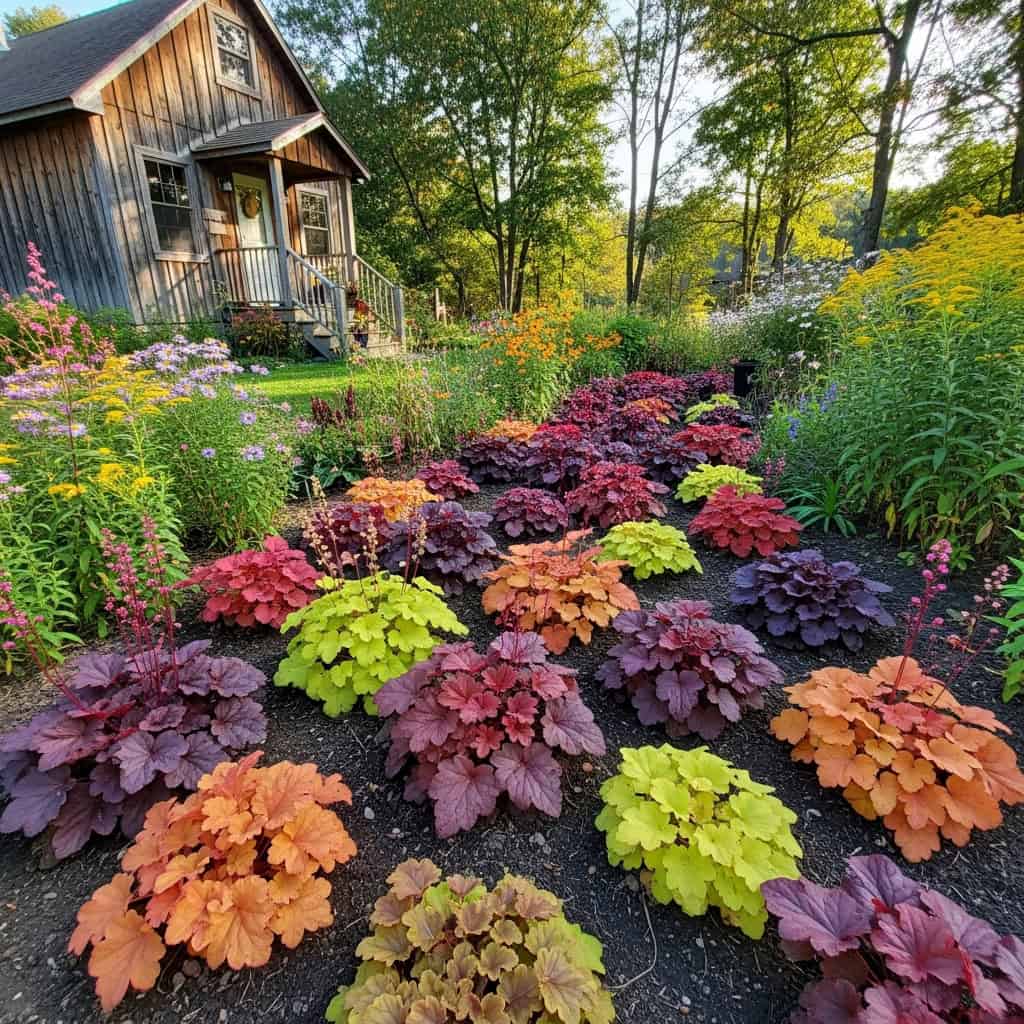
Pick plants that can handle the cold and last through winter. Combine them with seasonal flowers for extra pops of color.
Selecting perennials that are at least two zones hardier than the garden’s zone
I choose perennials that can handle at least two zones colder than my garden’s zone. Containers don’t insulate roots as well as the ground does, so these plants need extra toughness to survive winter.
I’ve had success with hookeras, Japanese forest grass, and hardy ferns in pots. For ground planting, I stick to perennials suited for my zone or colder. If you’re in USDA Zone 3 though, skip fall planting since the soil freezes too early there.
Adding seasonal annuals to evergreens for additional color
Evergreens add structure to containers, but they can look plain in the fall. I like adding seasonal annuals like marigolds or pansies for more color and life. These flowers brighten up the display while evergreens keep everything sturdy and fresh.
This mix ensures pops of vibrant hues as some plants fade with frost. The evergreens stay steady through the cold months while annuals shine during their season. This keeps my garden lively as I move on to planning late bloomers next!
Tip 4: Incorporating Late-Season Bloomers
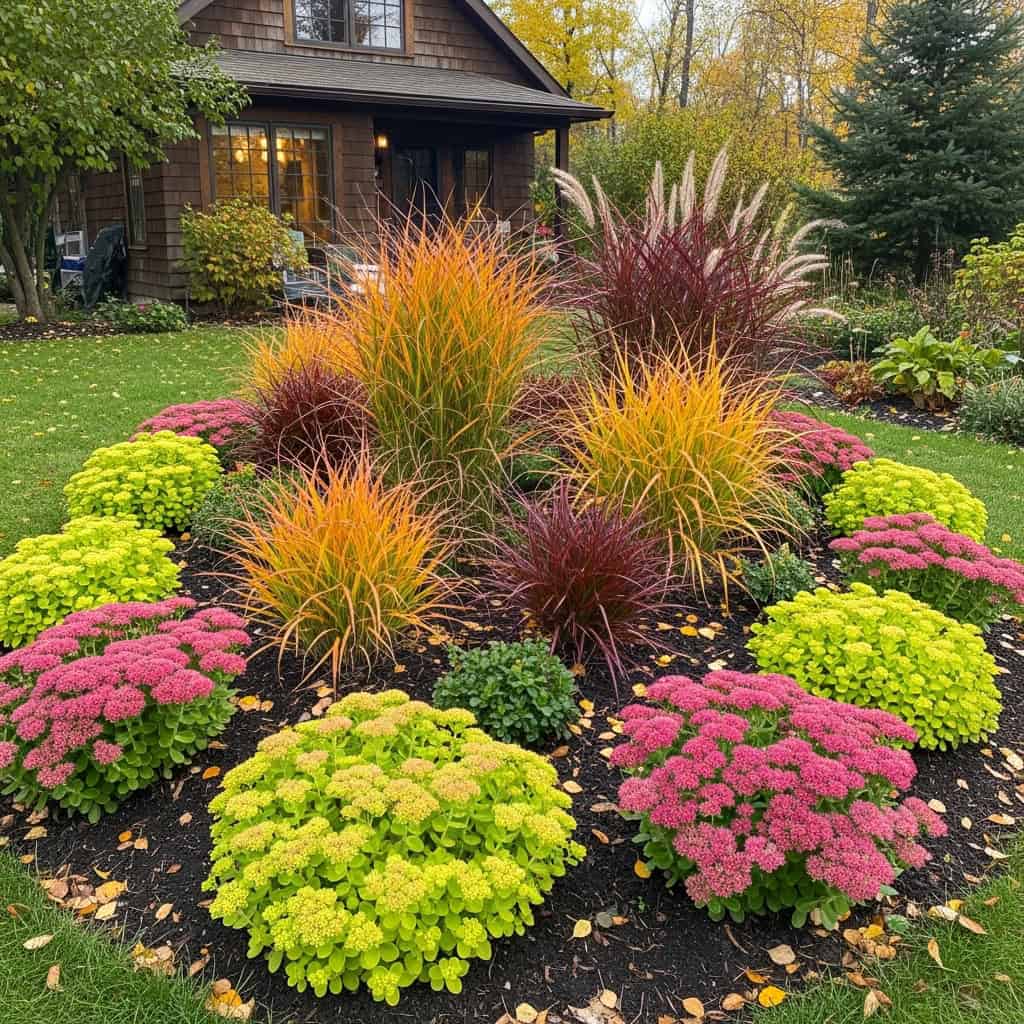
Choose plants that show off their beauty in cooler weather. Mix bold blooms and colorful leaves for a lively fall garden.
Including plants that bloom late in the season for continuous color
I like to plant late-blooming perennials for fall color. Sedum, ornamental grasses, Joe Pye weed, and asters keep my garden lively as the season cools. These plants add charm and bring in pollinators like butterflies.
Goldenrod with its bright yellow flowers always catches attention.
Annuals like zinnias or marigolds fill small gaps when blooms fade elsewhere. Frost-tolerant Nippon daisies look amazing into cooler days while attracting more butterflies! My favorite is Joe Pye Weed; it grows up to 7 feet tall and shines late into the season alongside sunflowers or cosmos.
Using foliage plants for added texture and color
Foliage plants keep gardens colorful and interesting in late fall. I use hooker, brunnera, lungwort, and lamb’s ear to add texture. Their bold leaves stand out even when flowers fade.
Mixing colors like silver, green, or burgundy creates depth.
Strategic placement makes a big difference. I plant them near late bloomers for contrast. In containers, they act as backdrops to seasonal blooms or other perennials. These plants bring lasting beauty without extra fuss!
Tip 5: Layering Plants for Dynamic Gardens
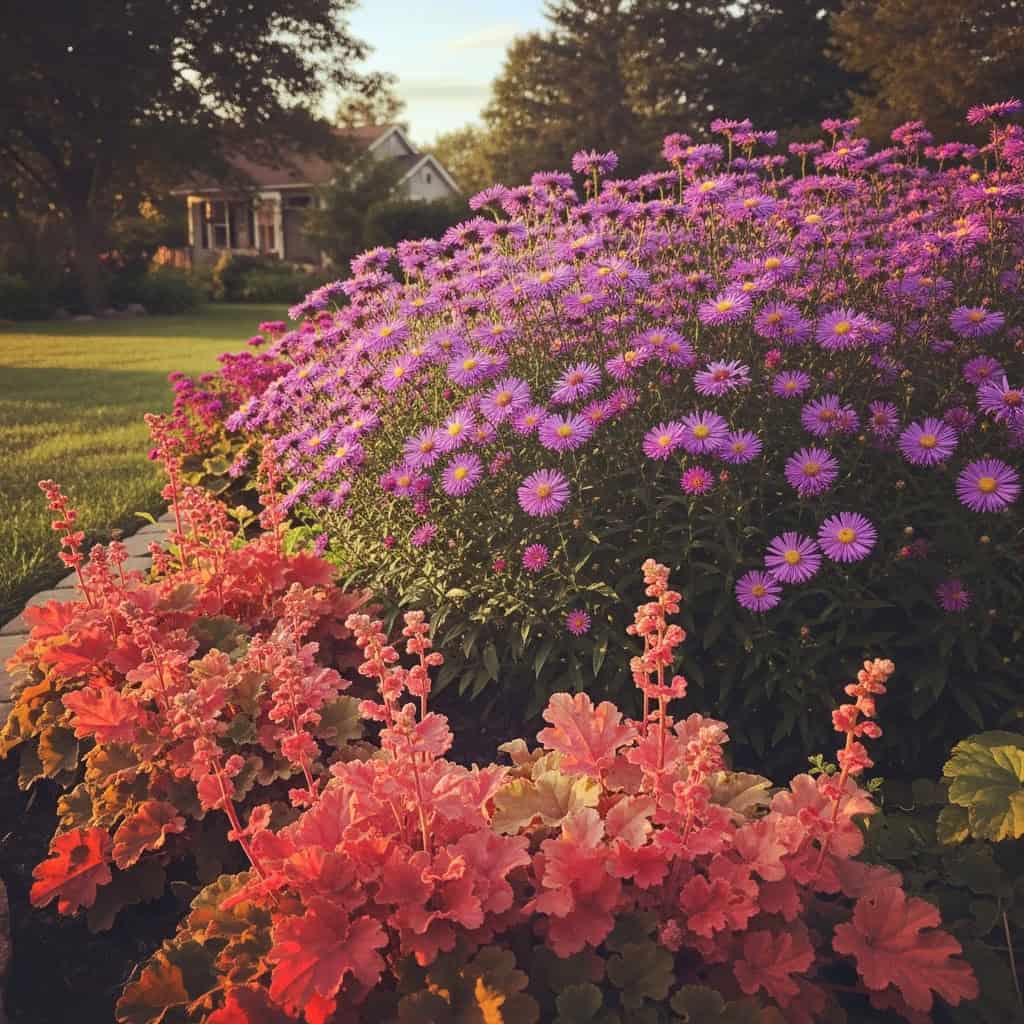
Plant tall flowers at the back and shorter ones in front for a full look. Use plants with bold leaves or bright colors to add depth and variety.
Creating a visually engaging garden by layering plants for varied color and texture
I start with taller plants like shrubs or ornamental grasses at the back. Their height gives structure and depth. In front, I add medium-height perennials like sedum or swiss chard for bursts of color during fall.
Closer to the edge, I use low-growing plants such as leaf lettuce or creeping thyme. Mixing textures is key—a blend of soft ferns, bold napa cabbage leaves, and spiky evergreens keeps it interesting all season long.
Conclusion
A fall garden doesn’t have to be boring. With the right plants, it stays bright and alive all season. Use hardy perennials, late bloomers, and textured layers for a colorful mix.
Add shrubs or grasses for even more depth and charm. Plan smart now, and enjoy beauty through the chilly months!
FAQs
1. What are the best vegetables to plant for a fall garden?
Cold-hardy vegetables like swiss chard, napa cabbage, mustard greens, and cool-season crops such as bush beans are great options for a fall vegetable garden.
2. When should I start planting my fall crops?
You should plan based on your first frost date. Start seed starting or transplant seedlings several weeks before this frost date to give your plants time to grow.
3. How can I protect my veggies from frost in the fall?
Use frost protection methods like cold frames or cover crops to shield your plants from chilly temperatures and extend their growing season.
4. Can crop rotation help with a successful fall garden?
Yes, crop rotation prevents soil exhaustion and improves organic gardening by reducing pests and diseases while helping maintain healthy soil.
5. What’s an easy tip for improving soil quality in a fall garden?
Add organic fertilizer or use compost bins to enrich the soil before planting zucchini, tomatoes, salad greens, or other fruiting vegetables.
6. Is succession planting useful for fall gardens?
Succession planting helps you maximize space by sowing new seeds after harvesting summer veggies like corn or earlier-planted cool-season crops for continuous production all season long.


